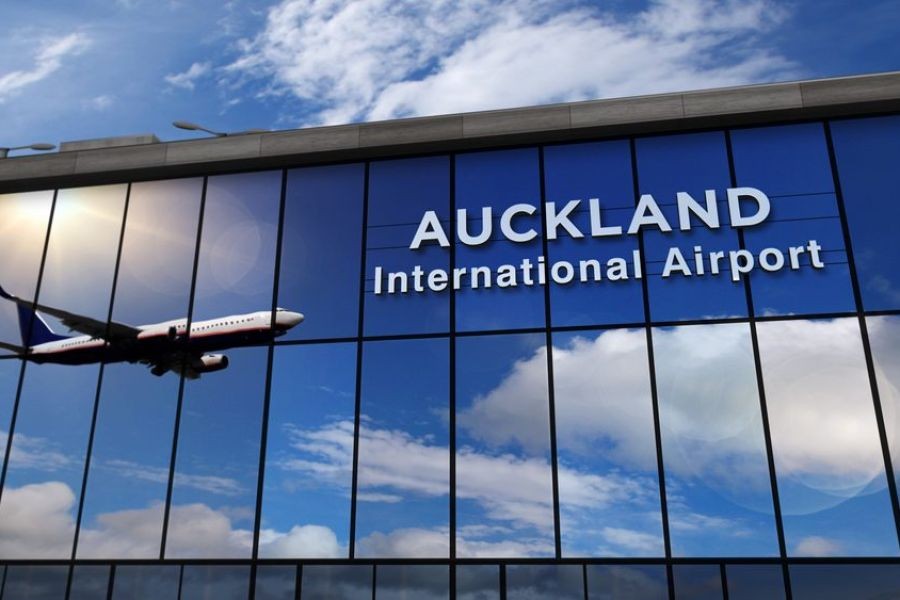New Zealand's airports are more than just transport hubs; they are vital gateways that link this island nation to the world. However, beneath the surface of their bustling terminals and runways lies a tapestry of hidden stories and lesser-known facts that impact New Zealand's economy, culture, and environment. As we delve into these aspects, it becomes evident that understanding these hubs can offer insights into broader trends affecting the nation. Here are five intriguing things you might not know about New Zealand's airports.
1. Environmental Sustainability Initiatives
New Zealand airports are at the forefront of environmental sustainability, aligning with the country's commitment to reducing its carbon footprint. Auckland Airport, for example, has been recognized for its ambitious sustainability targets, aiming to become a net-zero carbon airport by 2030. This initiative is part of a broader strategy to comply with New Zealand's Zero Carbon Act, which mandates the reduction of greenhouse gas emissions to net-zero by 2050.
The airport's measures include investing in renewable energy sources, enhancing energy efficiency across terminals, and introducing sustainable aviation fuel. These efforts not only contribute to environmental preservation but also set a precedent for other industries in New Zealand to follow suit. As Stats NZ reports, the transportation sector is a significant contributor to the nation’s emissions, highlighting the importance of such initiatives.
2. Economic Impact Beyond Flights
The economic contributions of New Zealand’s airports extend far beyond ticket sales and cargo. According to a report by the Ministry of Business, Innovation and Employment (MBIE), Auckland Airport alone contributes over NZD 4 billion to the national economy annually. This impact is primarily driven by employment opportunities, tourism, and trade facilitation.
Furthermore, airports serve as critical nodes in New Zealand’s export infrastructure. For instance, the export of perishable goods like seafood and dairy products relies heavily on air transport. As global demand for these products grows, New Zealand's airports are expected to play an even more crucial role in supporting the country's economic growth.
3. Cultural Reflections in Airport Architecture
New Zealand’s airports are designed to reflect the rich cultural heritage of the nation. The architecture and interior designs often incorporate elements inspired by Māori culture and local landscapes. Wellington Airport’s “Rock Terminal,” for example, is a standout architectural feature that echoes the rugged coastline of the region.
This cultural integration is not just aesthetic. It serves to welcome international visitors with a taste of New Zealand's unique identity right from the moment they step off the plane. The emphasis on cultural representation aligns with the country’s broader tourism strategy, which highlights authentic Kiwi experiences as a key drawcard for visitors.
4. Technological Innovations for Efficiency
In an era where technology drives efficiency, New Zealand airports are embracing digital transformations to enhance passenger experience and operational efficiency. Auckland Airport's recent deployment of AI-driven systems for baggage handling and security checks has reduced wait times significantly, improving overall passenger satisfaction.
The integration of such technologies is part of a global trend towards smart airports, which aim to streamline operations and reduce human error. These innovations not only improve traveler experience but also position New Zealand as a leader in adopting cutting-edge technology in aviation.
5. Strategic Role in Disaster Response
New Zealand’s geographical location makes it prone to natural disasters like earthquakes and volcanic eruptions. In such events, airports play a strategic role in disaster response and recovery. Christchurch Airport, for example, was pivotal in the aftermath of the 2011 earthquake, facilitating the rapid deployment of aid and emergency services.
Airports are integral to national emergency management plans, as they provide crucial connectivity for transporting resources and personnel quickly to affected areas. This capability underscores the importance of maintaining robust and resilient airport infrastructure to safeguard against future crises.
Real-World Case Study: Auckland Airport’s Sustainability Journey
Problem: Auckland Airport faced the challenge of reducing its carbon emissions while maintaining operational efficiency. With the aviation industry being a significant emitter of greenhouse gases, the airport needed to find sustainable solutions.
Action: The airport implemented a comprehensive sustainability plan, investing in renewable energy sources, electrifying ground support vehicles, and enhancing energy efficiency across its facilities.
Result: Within five years, Auckland Airport reduced its carbon emissions by 20%, a significant achievement documented in their annual sustainability report. The airport's efforts have been recognized with several environmental awards, setting an example for other airports worldwide.
Takeaway: Auckland Airport’s successful implementation of sustainability initiatives highlights the importance of proactive environmental strategies. New Zealand businesses can draw inspiration from this approach to enhance their sustainability efforts.
Common Myths & Mistakes About New Zealand’s Airports
- Myth: All airports in New Zealand are government-owned.
- Reality: While some airports are publicly owned, many operate under a mixed ownership model, involving private stakeholders. This diversity in ownership structure allows for varied investment and development strategies.
- Myth: Airports only serve passengers and cargo.
- Reality: Airports are significant economic hubs that support a range of industries, from hospitality to logistics, contributing billions to the economy.
Final Takeaways
- New Zealand’s airports are crucial economic drivers, contributing significantly to national GDP.
- Sustainability initiatives at airports are leading the way in reducing the aviation industry's carbon footprint.
- Technological advancements are enhancing the efficiency and passenger experience at New Zealand's airports.
- Airports play a vital role in disaster response, underscoring the need for resilient infrastructure.
Future Trends & Predictions
Looking ahead, New Zealand’s airports are poised to further integrate sustainable practices and technological innovations. The push towards net-zero emissions by 2050 will likely spur more investment in green technologies. Additionally, as global travel rebounds post-pandemic, airports may see increased passenger numbers, necessitating further expansions and enhancements.
By 2030, it is predicted that 50% of New Zealand's airports will operate on renewable energy, significantly reducing their environmental impact. Furthermore, advancements in AI and automation are expected to streamline operations, making travel even more efficient and enjoyable for passengers.
Conclusion
New Zealand's airports are more than mere transit points; they are dynamic entities that contribute to the nation's economic, cultural, and environmental landscape. As they continue to evolve, these travel hubs exemplify the innovative spirit and commitment to sustainability that defines New Zealand's approach to modern challenges. What insights surprised you the most about our airports? Share your thoughts and join the conversation!
People Also Ask
How do New Zealand airports contribute to the economy? New Zealand airports, especially Auckland Airport, contribute significantly to the economy by supporting tourism, facilitating trade, and providing numerous employment opportunities, collectively generating billions in economic value.
What sustainability practices are New Zealand airports implementing? Airports in New Zealand are implementing practices such as renewable energy integration, sustainable aviation fuels, and efficiency improvements in operations to align with national carbon reduction goals.
Related Search Queries
- New Zealand airport sustainability initiatives
- Economic impact of Auckland Airport
- Cultural elements in NZ airport design
- Technological innovations in NZ airports
- Role of airports in disaster response
































Royal Limos
4 months ago